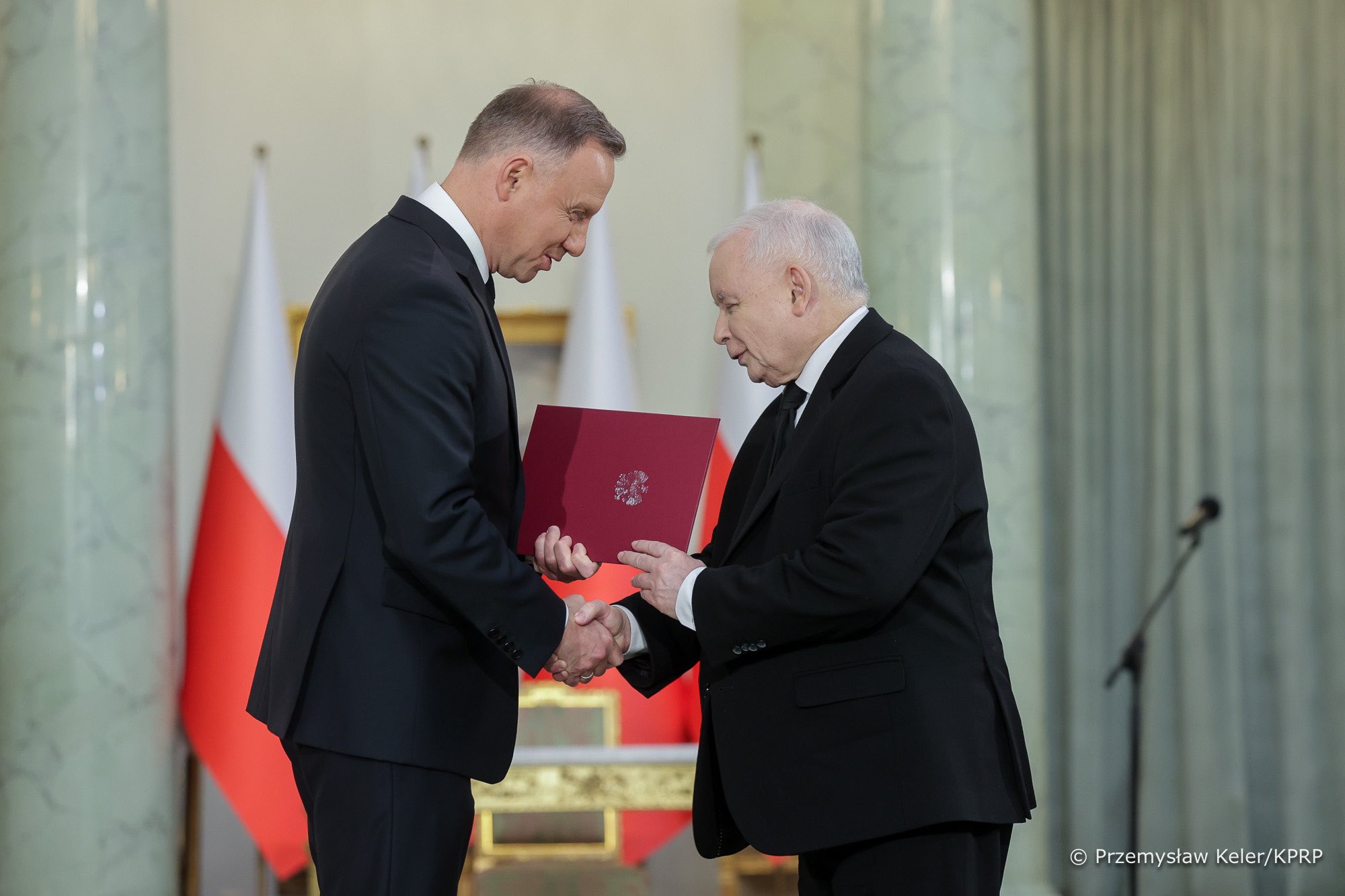Jarosław Kaczyński, the leader of the ruling PiS party, has returned to government to take up the role of deputy prime minister.
He may formally be subordinate to Prime Minister Mateusz Morawiecki, but in reality, Kaczyński as the party leader is his boss. This time around, Kaczyński is joining the government as the sole deputy prime minister with the task of coordinating the work of ministers, normally a job associated with the holder of the office of prime minister.
According to the Polish constitution, the president officially appoints all ministers presented to him by the prime minister. In a ceremony at the presidential palace, President Andrzej Duda formally swore Kaczyński in as deputy prime minister while accepting the resignations of the four other deputy prime ministers, Jacek Sasin, Mariusz Błaszczak, Piotr Gliński, and Henryk Kowalczyk.
President Duda thanked Kaczyński for taking on his new role.
The relations between Kaczyński and Duda have been strained over the past few years. The president has vetoed some legislation put forward by the ruling party, and it has been claimed that the two men have not met face-to-face for the past three years.
Jarosław Kaczyński had a stint as deputy prime minister responsible for security matters between 2020 and 2022. During that time, he chaired the cabinet’s security committee and piloted a major legislative reform to expand Poland’s military personnel and ramp up its defense spending. He left the government in June last year to concentrate on preparing the ruling party for the upcoming elections.
President Duda, during his remarks at the nomination ceremony, concentrated on security issues. He warned that it was likely Russia would attempt to interfere in the parliamentary elections, which will be held this autumn, as it has interfered in elections all over the world. Duda said that it was the duty of the government to ensure that democracy was safe from attempts to subvert it from outside the country.
Poland does not use voting machines in its elections, and the votes are counted within the polling stations servicing the electoral precincts. However, the voting data is transferred electronically to regional and national bodies, and there have been problems in the past with software malfunctions in the system supporting that data collection.
Commentators feel that Kaczyński’s return is targeted at making the party and the government more united in the run-up to the election. The ruling Law and Justice (PiS) party is still ahead in the opinion polls, but the liberal opposition led by Donald Tusk has narrowed the gap recently as a result of squeezing votes for the smaller center and left parties.





